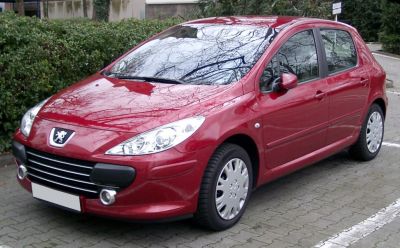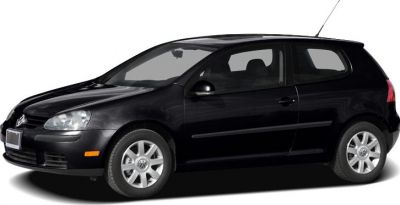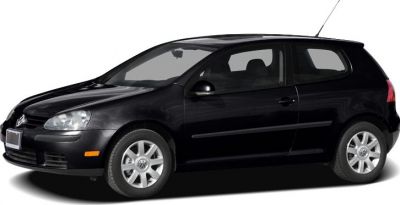 2007 Toyota Blade Dimensions, Size & Specs
2007 Toyota Blade Dimensions, Size & SpecsMeasurements of the 2007 Toyota Blade, engineered for optimal performance and comfort
| Dimensions | |
|---|---|
| Length: | 4220 mm166.1 in13.8 ft |
| Width: | 1760 mm69.3 in5.8 ft |
| Height: | 1515 mm59.6 in5.0 ft |
| Trunk Capacity: | 354 liter12.5 cu ft |
| Trunk Capacity (Max): | 761 liter26.9 cu ft |
| Weight Specifications | |
| Curb Weight: | 1250 kg2756 lbs |
The Toyota Blade hatchback, produced from 2006 to 2011, represents a distinctive mid-sized compact vehicle option from Toyota, combining practicality with efficient design. The 2007 model year features a length of 4220 mm (166.1 inches), a width of 1760 mm (69.3 inches), and a height of 1515 mm (59.6 inches), positioning it comfortably within the compact hatchback segment—ideal for urban environments and daily commutes. Weighing in at a curb weight of approximately 1250 kg (2756 lbs), the Blade balances lightweight agility with stable driving dynamics. Its luggage capacity offers a practical 354 liters (12.5 cubic feet) of space, which expands significantly to 761 liters (26.9 cubic feet) when rear seats are folded down, making it versatile for transporting larger items or increased cargo loads. Designed with versatility in mind, the Toyota Blade hatchback merges efficient use of space with the convenience typical of hatchback vehicles, making it a competitive choice for drivers seeking a reliable, stylish, and reasonably sized car within its production window from 2006 to 2011.
Discover the standout features that make the 2007 Toyota Blade a leader in its class
Have a question? Please check our knowledgebase first.
The Toyota Blade from the 2006 to 2011 production period measures 4220 mm (approximately 166.1 inches) in length, making it relatively compact for an urban hatchback. Its width is 1760 mm (about 69.3 inches), providing a stable road presence without being too bulky for city driving. The height stands at 1515 mm (roughly 59.6 inches), which allows for a comfortable headroom inside while maintaining a sleek, aerodynamic profile. These dimensions position the Blade as a mid-sized hatchback that balances maneuverability with interior space.
The Toyota Blade weighs around 1250 kg (approximately 2756 lbs) curb weight. This moderate weight influences both performance and fuel efficiency positively by ensuring the vehicle is light enough to be responsive and agile while driving, yet solid enough to maintain stability. The relatively low curb weight helps improve acceleration, braking, and handling characteristics. Additionally, a lighter vehicle generally consumes less fuel, making the Blade a practical choice for those prioritizing economy without sacrificing drivability.
The Toyota Blade offers a luggage capacity of 354 liters (around 12.5 cubic feet) with all seats in place, providing reasonable storage space for everyday needs like grocery shopping or luggage for short trips. When the rear seats are folded down, the cargo volume expands significantly to 761 liters (roughly 26.9 cubic feet), which facilitates carrying larger items or bulkier luggage. This flexibility makes the Blade suitable for a variety of lifestyle demands, from commuting to weekend getaways.
The Toyota Blade's dimensions—4220 mm (166.1 inches) in length, 1760 mm (69.3 inches) in width, and 1515 mm (59.6 inches) in height—make it well-suited to fit comfortably inside a standard residential garage. Most single-car garages have widths around 2.4 to 2.7 meters (about 8 to 9 feet) and lengths averaging 5 to 6 meters (16 to 20 feet), which provides ample clearance for the Blade. Its moderate size enables easy maneuvering and leaves enough space for storage or walking around the vehicle when parked indoors.
The Toyota Blade is actually a model based on the Toyota Auris platform and did not have a direct predecessor with the same name. However, it can be compared to the first-generation Toyota Auris, which it closely relates to. Dimensionally, the Blade shares similar measurements but distinguishes itself with a slightly more upscale hatchback appeal and some additional features. The Blade's dimensions such as length around 4220 mm and width about 1760 mm are consistent with the Auris, but the Blade offers a more premium positioning in terms of trim and options during its production years from 2006 to 2011.
Compared to other compact hatchbacks of its era like the Honda Civic, Mazda3, or Volkswagen Golf, the Toyota Blade fits firmly in the mid-size hatchback segment. Its length of 4220 mm (166.1 inches) and width of 1760 mm (69.3 inches) are quite typical and provide a balance between interior space and urban maneuverability. While some rivals may offer slightly more interior volume or sporty dimensions, the Blade's design emphasizes a comfortable ride and functionality with respectable luggage capacity and an efficient overall footprint suitable for city and suburban driving.
While exact interior cabin dimensions for the Toyota Blade are not always specified, the exterior dimensions of 4220 mm length, 1760 mm width, and 1515 mm height translate into a reasonably spacious environment for a compact hatchback. The headroom and legroom are optimized to accommodate adult passengers comfortably, focusing on ergonomic seating and good visibility. The folding rear seats enhance versatility, allowing users to adjust passenger and cargo space dynamically. Additionally, the use of quality materials and thoughtful interior design contribute to an overall comfortable driving experience.
The Toyota Blade lounges in the compact hatchback category, offering reasonable passenger space for a small family. Its moderate length of 4220 mm (166.1 inches) and width of 1760 mm (69.3 inches) permit comfortable seating for up to five passengers, though rear-seat space might be best suited for children or smaller adults. The 354-liter (12.5 cu ft) luggage capacity efficiently supports daily activities like school runs or grocery trips, while folding the rear seats increases cargo volume to 761 liters (26.9 cu ft), making it practical for family outings with extra gear or luggage.
While the exact ground clearance of the Toyota Blade is not commonly listed, typical models in this hatchback class offer clearance around 130-160 mm (5.1 to 6.3 inches). This moderate height strikes a balance between easy entry/exit, good aerodynamic performance, and the ability to handle varied urban and suburban road conditions. The ground clearance allows confident navigation over speed bumps and uneven pavement but, like most compact hatchbacks, is not designed for off-road usage. It is best suited for paved roads and light gravel surfaces.
The Toyota Blade was marketed as a more premium variant based on the Auris platform, featuring notable upgrades in styling and equipment compared to Toyota's typical hatchbacks of that era. It sported sharper exterior design, more upscale interior trim materials, and unique features such as advanced climate control, improved audio systems, and enhanced safety options. These upgrades distinguished the Blade as a hatchback with a more refined focus, catering to customers seeking a combination of practicality and additional comfort or luxury compared to standard models.
Discover similar sized cars.

| Model Year: | 2007 |
|---|---|
| Length: | 4220 mm166.1 in |
| Width: | 1760 mm69.3 in |
| Height: | 1515 mm59.6 in |

| Production: | 2005-2008 |
|---|---|
| Model Year: | 2005 |
| Length: | 4212 mm165.8 in |
| Width: | 1746 mm68.7 in |
| Height: | 1510 mm59.4 in |

| Production: | 2001-2005 |
|---|---|
| Model Year: | 2001 |
| Length: | 4202 mm165.4 in |
| Width: | 1730 mm68.1 in |
| Height: | 1512 mm59.5 in |

| Production: | 2023-present |
|---|---|
| Model Year: | 2023 |
| Length: | 4264 mm167.9 in |
| Width: | 2070 mm81.5 in |
| Height: | 1564 mm61.6 in |

| Production: | 2019-2023 |
|---|---|
| Model Year: | 2020 |
| Length: | 4261 mm167.8 in |
| Width: | 2070 mm81.5 in |
| Height: | 1568 mm61.7 in |

| Production: | 2006-2009 |
|---|---|
| Model Year: | 2006 |
| Length: | 4210 mm165.7 in |
| Width: | 1759 mm69.3 in |
| Height: | 1479 mm58.2 in |

| Production: | 2006-2009 |
|---|---|
| Model Year: | 2006 |
| Length: | 4210 mm165.7 in |
| Width: | 1759 mm69.3 in |
| Height: | 1479 mm58.2 in |

| Model Year: | 2022 |
|---|---|
| Length: | 4200 mm165.4 in |
| Width: | 2055 mm80.9 in |
| Height: | 1505 mm59.3 in |
